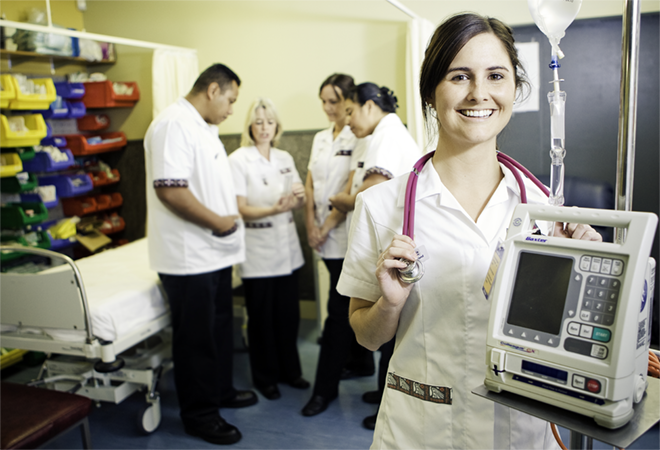
Evaluating the Effectiveness of Immersive Learning in Nurse Education
Status
Completed: 20 June 2015
Project Details
A project completed in 2015, undertaken by Otago Polytechnic, to evaluate the effectiveness of using a technology-enhanced, integrated, immersive, teaching approach to clinical practice, in order to improve learner outcomes within nursing education.
Aims:
The main aims of the project were to:
- evaluate two technology-enhanced learning strategies for clinical practice
- assess how nursing students responded to the introduction of clinical simulations in teaching and how effective these were in the context of a newly-developed immersive learning approach.
Methodology:
The overall approach was one of action research in a cyclic process over a period of a year. The methodology used involved:
- gathering qualitative data during the academic year using focus groups and an external facilitator
- a structured interview format was used containing questions related to the level of satisfaction and confidence in dealing with the scenario, the learning experience, and preference for learning elements
- gathering quantitative data at the end of academic year using an online survey instrument and self-reported data
- analysing exam performance data when all students had completed the course.
Team

Dr Liz Ditzel
Project Leader
Otago Polytechnic
Dr Karole Hogarth
Otago Polytechnic
Raewyn Lesa
Otago PolytechnicStatus
Funding
$69,816.00 (excl GST)
Key Findings
The key findings from the project included:
- The immersive learning process was effective. Seeing the videos embedded in LabTutor was particularly helpful. Students were able to link pathophysiology relating to the person’s condition and the simulated nursing scenario involving the person presented in the LabTutor video.
- Learning opportunities (negative learning) occurred when the manikin did not operate properly (e.g. the manikin kept on blinking but had no pulse) and prompted students to use critical thinking and problem-solving skills.
- Negative learning also occurred when there was a lack of integration within learning components. Where the sequence of immersive learning tasks, such as the link from online to practical implementation was unclear to students, they reported impeded progress and lowered confidence in understanding.
- Realism was not well established. In the first half of the year most participants referred to the manikin as “the dummy” suggesting that the transference or the person’s identity (shown in the case study) was not occurring. However, later in the year when the manikin broke down, this term was seldom used.
- Students reported improved levels of confidence in learning by simulation but didn’t like being watched.
- A significant difference was found in exam marks – these were higher for students who had had the immersive learning experience and had been on a medical placement before the exam.
Key Recommendations
Several developments have occurred that have positively refined and improved the effectiveness of immersive learning in nurse education. These developments include:
Upgrade of LabTutor | In 2014 ADInstruments upgraded LabTutor to ‘KuraCloud’, a cloud-based Learning Management System (LMS). KuraCloud offers the same electronic patient case studies and videos but is easier for students to use and academic staff can independently edit and update content. Academic staff can also easily tailor case studies in KuraCloud to meet individual course learning objectives.
Student participation and engagement | In 2015, in response to feedback from students involved in this study, KuraCloud learning KuraCloud learning analytics (measurement systems) also enable academics to determine student course participation and engagement. In 2015, in response to feedback from students involved in this study, KuraCloud learning packages have been designed to meet the learning objectives of a Pathophysiology course.
Teaching and learning resources | The main teaching and learning resource is now the electronic case study supported by a lecturer-led tutorial rather than student’s gathering their own data, i.e., the hands-on tutorial experiments such as spirometry measurement and ECG recording have been dropped. The case study effectively integrates student learning across theory and clinical courses. Simulations are now being run across Years 1, 2, and 3 of the Bachelor of Nursing degree programme.
Staff more adept with technology | Staff continue to become more adept with KuraCloud technology and the content/context of simulation as a teaching tool, and students are actively engaging with it. The ability of staff to edit content means that current topic in health in nursing can easily be added. The School is also exploring how to best equip a bigger learning suite as simulation is embedded into the curriculum.
A research report prepared by Liz Ditzel, Raewyn Lesa and Karole Hogarth.
(PDF, 1.6 MB,57-pages).
- 12 June 2015